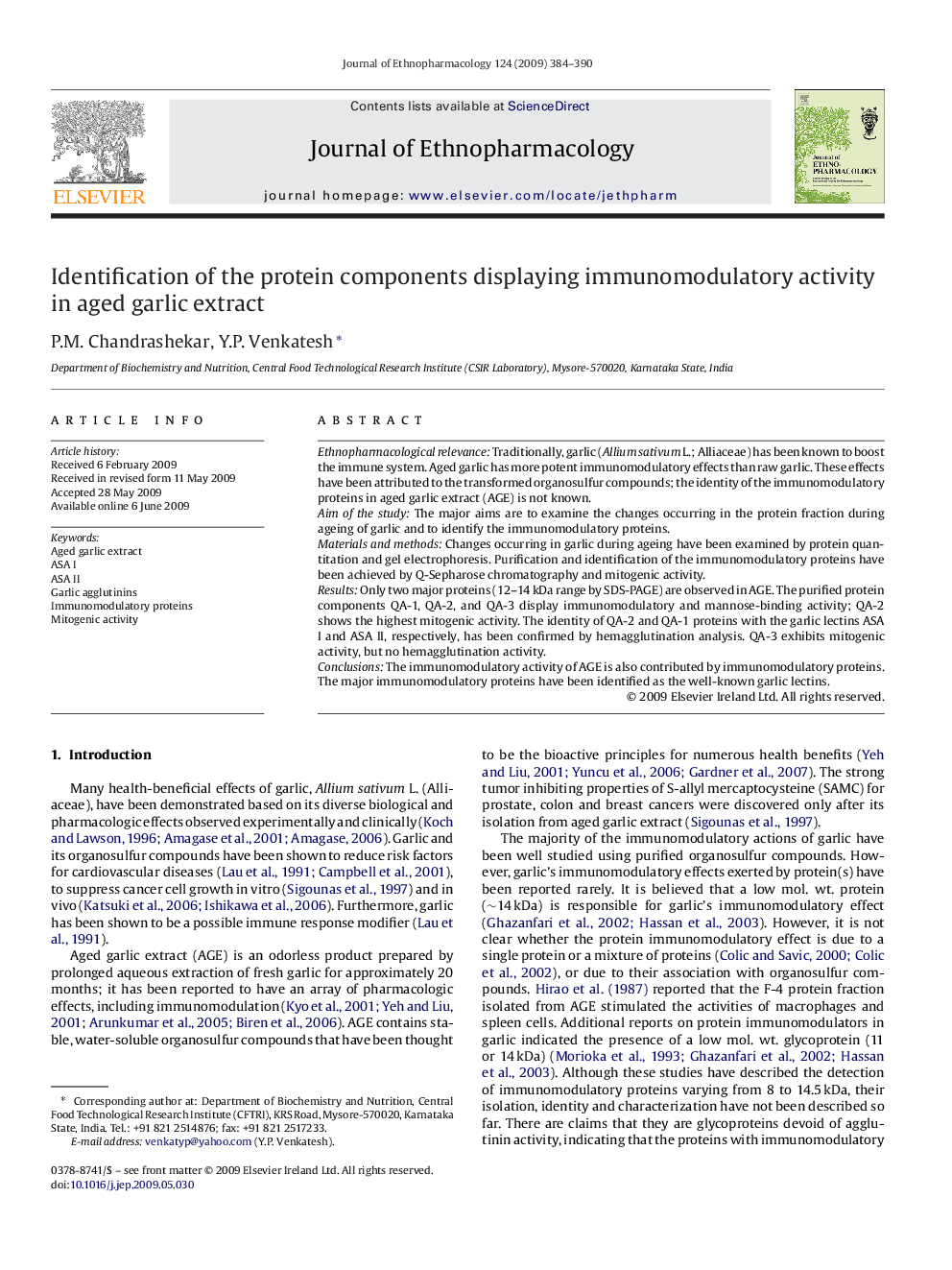| کد مقاله | کد نشریه | سال انتشار | مقاله انگلیسی | نسخه تمام متن |
|---|---|---|---|---|
| 2546700 | 1124034 | 2009 | 7 صفحه PDF | دانلود رایگان |

Ethnopharmacological relevanceTraditionally, garlic (Allium sativum L.; Alliaceae) has been known to boost the immune system. Aged garlic has more potent immunomodulatory effects than raw garlic. These effects have been attributed to the transformed organosulfur compounds; the identity of the immunomodulatory proteins in aged garlic extract (AGE) is not known.Aim of the studyThe major aims are to examine the changes occurring in the protein fraction during ageing of garlic and to identify the immunomodulatory proteins.Materials and methodsChanges occurring in garlic during ageing have been examined by protein quantitation and gel electrophoresis. Purification and identification of the immunomodulatory proteins have been achieved by Q-Sepharose chromatography and mitogenic activity.ResultsOnly two major proteins (12–14 kDa range by SDS-PAGE) are observed in AGE. The purified protein components QA-1, QA-2, and QA-3 display immunomodulatory and mannose-binding activity; QA-2 shows the highest mitogenic activity. The identity of QA-2 and QA-1 proteins with the garlic lectins ASA I and ASA II, respectively, has been confirmed by hemagglutination analysis. QA-3 exhibits mitogenic activity, but no hemagglutination activity.ConclusionsThe immunomodulatory activity of AGE is also contributed by immunomodulatory proteins. The major immunomodulatory proteins have been identified as the well-known garlic lectins.
Journal: Journal of Ethnopharmacology - Volume 124, Issue 3, 30 July 2009, Pages 384–390